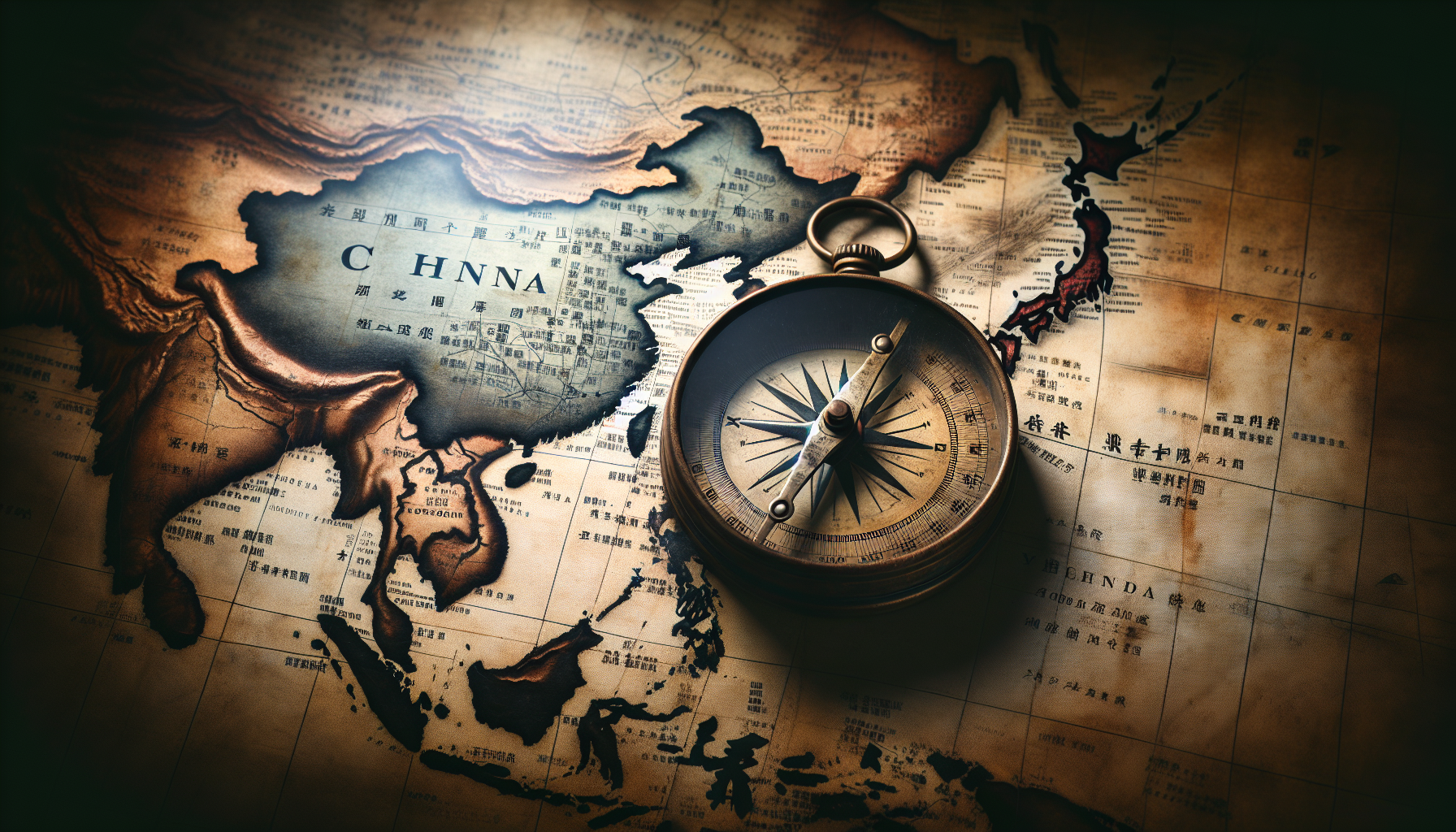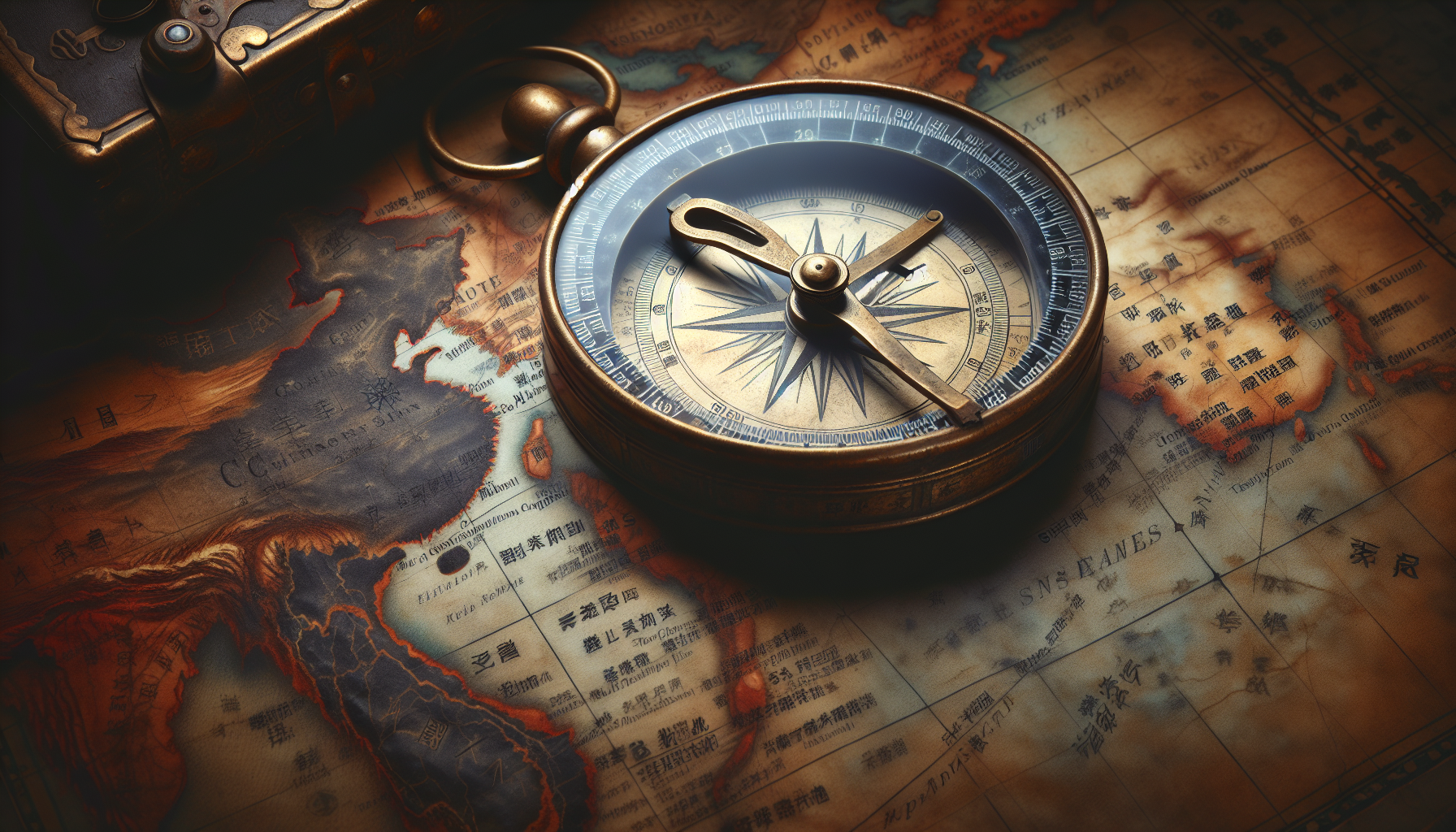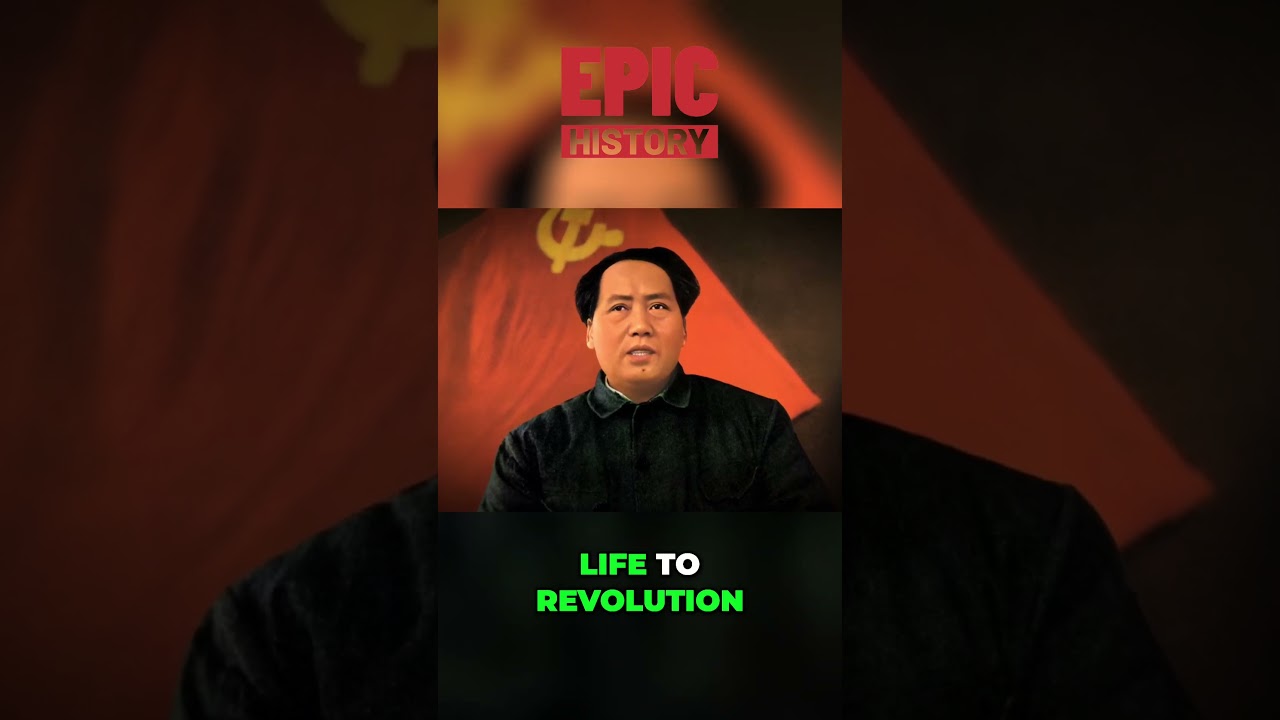Mao Zedong’s declaration of the People’s Republic of China marked a significant transition in the Chinese political landscape, positioning the Chinese Communist Party as the primary force in governance. Through his articulation of a revolution framed as a lifelong mission, Mao established the People’s Democratic Dictatorship, albeit without a true emphasis on democratic principles. The structural organization of power is critical, with the Central Committee and Politburo playing vital roles, while the Politburo Standing Committee emerges as the ultimate decision-making body.
This analysis examines the intricate dynamics of power during the early years of the People’s Republic, focusing on the roles of senior leaders such as Liu Shaoqi. The tension between the aspirational rhetoric of revolution and the reality of centralized control presents a compelling picture of governance in a one-party state. The interplay between party structure, policy decisions, and everyday life underscores the complexities of leadership and ideology during this transformative period in Chinese history.
Background of Mao Zedong
Early Life and Education
You encounter the origins of Mao Zedong in a small village in Hunan Province, born on December 26, 1893. His upbringing within a peasant family exposed him to the harsh realities of rural life in early 20th-century China. In this historical canvas, you will find the seeds of his revolutionary ideas, as Mao experienced both the struggles and the resilience of the Chinese people. His education began at a local primary school and evolved through various institutions, ultimately leading him to the First Normal School of Hunan. Here, Mao’s engagement with new ideas—ranging from nationalism to democracy and socialism—unfolded, propelling him into the realm of political thought.
Influence of Chinese History
Your understanding of Mao’s ideology cannot be complete without recognizing the immense weight of Chinese history upon him. The late Qing Dynasty faced immense internal degradation and external pressures, manifesting in the Opium Wars and a series of invasions that compromised national sovereignty. The resultant dissatisfaction bleeds into the political consciousness of Mao and his contemporaries. The 1911 Revolution that led to the downfall of the Qing Dynasty marked a pivotal moment for Mao, igniting desires for national rejuvenation and social reform. Consequently, his life and political trajectory were intimately interwoven with the national unease of his time.
Mao’s Early Political Involvement
As you delve into Mao’s early political involvement in the 1910s, you recognize a figure eager to engage with the revolutionary currents swirling around him. The establishment of the Chinese Communist Party (CCP) in 1921 was a turning point, and Mao’s active participation underscored his commitment to communist ideology. He rose through the ranks as an editor and organizer, propelling the ideas of Marxism-Leninism to the forefront of his regional aspirations. Through his involvement in agrarian protests, you observe not just a budding political leader but an individual whose identity becomes increasingly linked to the struggles of the proletariat.
The Chinese Communist Party
Formation of the CCP
The formation of the Chinese Communist Party (CCP) in July 1921 establishes a crucial moment in modern Chinese history. You witness this fledgling party emerging from discontent with warlordism and Western imperialism, bringing together intellectuals and workers advocating for socialism. Under the influence of the Bolshevik Revolution, the CCP aspired to forge a new path for China’s revolutionaries, deviating from the Nationalist Party increasingly associated with Western influences. The inclusion of various ideological perspectives within the party framework highlighted its complexity and the challenge it would face in achieving unity.
Ideological Foundations
The ideological foundations of the CCP were marked by a synthesis of Marxism-Leninism and Chinese realities. As you interact with this ideological discourse, you will see Mao increasingly advocate for the relevance of peasant revolutions, a departure from the classic Marxist focus on urban proletariat movements. This adaptation underscored a desire to harness the immense rural population as a revolutionary force, thereby establishing a uniquely Chinese flavor of socialism. Here, you witness a critical ideological transformation, characterizing Mao’s vision for a radical reimagining of society.
Influence of Marxism-Leninism
Mao’s affinity for Marxism-Leninism represented not only an ideological commitment but also a practical toolkit he sought to employ in China’s struggle for liberation. The principles of class struggle and the vanguard party guided his political strategies. You observe how he navigated Marxist theory, merging it with historical materialism, which he believed aligned with the socio-economic conditions in China. This mash-up of ideas morphs into a distinct set of beliefs that would guide the governance structures he later put into practice.

The Chinese Civil War
Conflict Between Nationalists and Communists
As you explore the landscape of the Chinese Civil War, which erupted in the late 1920s, you witness the fierce power struggle between the Nationalists, led by Chiang Kai-shek, and the Communists, headed by Mao. This conflict, rooted in ideological divides and territorial ambitions, inflamed the sentiments of millions caught in a deadly rivalry. Trapped in this socio-political vortex, each side employed ruthless tactics, showcasing the brutality of the era and forcing you to contemplate the cost of power.
Key Battles and Strategies
Among the key battles in this tumultuous period, the encirclement campaigns and the pivotal Battle of Tai’erzhuang lay out a tapestry of strategic maneuvering. You engage with Mao’s guerrilla warfare tactics, emphasizing mobility, local support, and a deep reliance on the rural populace. As you analyze the dichotomy between the Nationalist army’s conventional approach and the Communist’s asymmetric strategies, you ponder the broader implications of warfare and its impact on national consciousness and identity.
Role of Foreign Powers
The role of foreign powers presents you with a complex interplay influencing the civil war’s course, as Japan’s incursions during the Second Sino-Japanese War further complicated the Nationalist-Communist dynamic. You find yourselves navigating alliances, betrayals, and varying degrees of foreign involvement. The United States lent support to the Nationalists, while the Soviets provided assistance to the Communists, turning China into a chessboard for international ambitions, amplifying the stakes involved in this significant confrontation.
The Long March
Significance of the Long March
The Long March, spanning from 1934 to 1936, emerges as a watershed moment in Mao’s narrative, symbolizing endurance in the face of adversity. As you traverse the arduous route taken by Mao and his followers, you experience not just the physical hardships confronted but also the profound ideological transformations that emerged from this experience. The March crystallized the resolve of the Communist forces, reinforcing their commitment to revolution and creating a poignant sense of destiny within the ranks.
Leadership and Strategy
Examining Mao’s leadership during the Long March, you discern a masterful combination of strategic foresight and charismatic authority. The challenges they faced—from hostile terrains to enemy forces—necessitated innovative approaches. You observe how Mao used this backdrop to reinforce his ideological frameworks, advocating for the importance of peasant support and political education, thereby solidifying his standing as the preeminent leader of the CCP.
Cementing Mao’s Authority
Throughout the Long March, you perceive the gradual cementing of Mao’s authority as various factions within the Communist Party either fell away or rallied behind him. The difficulties endured by the marchers and the narratives constructed around these hardships allowed Mao to cultivate a heroic image. This cultivation of a robust personality becomes crucial as the CCP sought to bolster its legitimacy amid the challenges of the civil war.

Proclamation of the People’s Republic of China
Historical Context of the Declaration
Your understanding of the declaration of the People’s Republic of China (PRC) on October 1, 1949, necessitates a dive into the historical context of post-civil war China. The war’s end left the nation in disarray, with the populace yearning for stability and reform after years of conflict. Mao’s proclamation served as both an end and a beginning—an affirmation of victory over the Nationalists and a pledge to usher in a new era of social and economic transformation.
Key Figures Present
As you immerse yourself in the event of the PRC’s founding, it becomes critical to acknowledge the diverse array of figures present alongside Mao in Tiananmen Square. You will encounter notable leaders such as Zhou Enlai and Liu Shaoqi, whose roles exemplify the collective leadership that would characterize the CCP’s initial years. The presence of these key figures, emblematic of the party’s grassroots origins and ideological foundations, reflects the multifaceted nature of this historical achievement.
Initial Public Reaction
The initial public reaction to the proclamation was rife with hope and trepidation, as crowds gathered to witness the birth of a new political paradigm. You sense the palpable excitement of millions rallying behind Mao’s vision, along with the sobering realities of transition from a fragmented state to a unified republic. The euphoria of liberation intermingled with skepticism, setting the stage for the complexities and challenges that lay ahead.
Political Structure of the PRC
Central Committee and Politburo
The political structure of the People’s Republic of China reveals intricate layers through which authority flowed. At the helm, the Central Committee, composed of approximately one hundred senior party members, functioned as the overarching body guiding policy and governance. The Politburo, comprised of the most prominent political figures, operated beneath this umbrella. As you explore this hierarchical arrangement, you see parallels to both military strategy and bureaucratic administration, reflecting the centralization of power.
Role of the Politburo Standing Committee
Your investigation further delves into the Politburo Standing Committee, which emerged as the apex of political decision-making in the PRC. This elite body, initially comprising five members, wielded considerable authority, shaping both domestic policies and international stances. The concentrated power within this committee underscored the tensions and dynamics that would characterize Mao’s governance style—an approach favoring decisive control over consensus-driven politics.
Systems of Governance Established
Exploring the systems of governance established under Mao, you confront a framework that starkly contrasts with democratic ideals. The architecture of the People’s Democratic Dictatorship became apparent, emphasizing party supremacy and tightly controlled civil society. This regime’s governance model aimed to unify ideological adherence while systematically suppressing dissent. Through institutions of propaganda, censorship, and surveillance, you witness the emergence of a state apparatus designed to maintain control over the citizenry and regional actors alike.

Mao’s Political Ideology
People’s Democratic Dictatorship
The concept of the People’s Democratic Dictatorship forms a cornerstone of Mao’s political ideology, marking a notable divergence from Western democratic principles. You delve into the theoretical underpinnings that emphasize the centrality of the proletariat in governance while subordinating bourgeois interests. This model focused on mobilizing the masses towards revolutionary change but curtailed individual liberties in the process, raising essential questions about legitimacy and representation.
Cult of Personality
Mao’s ascendance is intricately tied to the development of a cult of personality, blossoming into an icon that became inseparable from the revolutionary narrative. As you navigate this phenomenon, you realize that this elevation went beyond mere propaganda; it framed Mao as the embodiment of the nation’s aspirations. His image adorned posters, textbooks, and public spaces, reinforcing his authority and cultivating a sense of loyalty that would prove both powerful and destabilizing.
Revolutionary Rhetoric vs. Reality
In considering the gap between revolutionary rhetoric and social reality, you grapple with the contradictions inherent in Mao’s regime. The lofty promises of equality and prosperity often clashed with widespread famine, repression, and economic chaos. This disconnect raises pivotal questions about the broader implications of revolutionary ideology, compelling you to reflect on the complexities of governance in an authoritarian context.
Economic Policies and Reforms
Land Reforms and Collectivization
Mao’s economic policies signaled a radical transformation of agrarian structures aimed at dismantling feudal remnants. The land reforms initiated in the early 1950s sought to redistribute land from landlords to peasants, presenting a façade of equitable social relations. However, the implementation often unveiled violent struggles and inevitable resistance. You find yourselves contemplating the complexities of collectivization efforts, where the establishment of communes further intensified class struggles within the peasantry.
Great Leap Forward
The Great Leap Forward, initiated in 1958, aimed to expedite industrialization through collective farming and backyard furnaces. As you investigate the contours of this ambitious campaign, you uncover a world marred by over-reporting and unrealistic expectations that spiraled into disaster. The resultant famine claimed millions of lives, shattering the very foundation of Mao’s revolutionary ambitions. The Great Leap served as a cautionary tale, revealing the hazards of reckless economic planning and the susceptibility of ideology to practical realities.
Consequences of Economic Policies
The consequences of Mao’s economic policies resonated far beyond immediate economic metrics. You explore the social ramifications, from family disintegration to widespread disillusionment among the peasantry. Economically, China faced stagnation, worsening living conditions, and a questioning of the CCP’s governance. The fallout from these policies invited scrutiny, foreshadowing discontent that would bubble beneath the surface in subsequent decades.
Social Impact of Mao’s Leadership
Changes in Education and Culture
Mao’s leadership encapsulated profound shifts in education and cultural policies, which aimed to reshape Chinese society fundamentally. You encounter the promotion of revolutionary education emphasizing ideological conformity over traditional learning. The Cultural Revolution in the mid-1960s epitomized this approach, as you witness attacks on intellectuals and the destruction of cultural artifacts, all designed to purge ‘bourgeois’ influences. In this landscape, education served both as a tool for indoctrination and a mechanism for social upheaval.
Role of Women in Society
Mao’s government heralded significant changes in the role of women within society, advocating for gender equality and women’s participation in the labor force. You observe initiatives promoting women’s rights in marriage and employment; yet, the overarching narrative often masked deeper societal tensions. While laws may have promised liberation, the practical application reveals complexities, as societal expectations frequently clashed with state-imposed roles.
Repression of Dissent
The repression of dissent under Mao becomes apparent as you navigate the broader social landscape. The Cultural Revolution, particularly, epitomized the zero-tolerance approach towards opposition, where perceived counter-revolutionaries faced imprisonment, humiliation, or worse. This stark reality underscores the regime’s refusal to tolerate divergent views, fueling an atmosphere of fear that permeated society. As you reflect on this repression, questions arise about the balance between revolutionary zeal and the suppression of personal freedoms.
Conclusion
Summation of Mao’s Impact on China
As you contemplate Mao Zedong’s lasting impact on China, a tapestry of complexity unfolds. His transformative policies, ideologies, and the resulting societal changes shaped modern China profoundly. While his tenure marked a break from feudalism, it also deepened entrenched state control, fostering a duality that would characterize the nation’s trajectory long after his departure.
Relevance of Mao’s Ideologies Today
The relevance of Mao’s ideologies in contemporary China presents a multifaceted discourse. You recognize that while economic reforms have significantly altered the landscape, the ghost of Maoism still lingers in the narrative of national identity. The state’s institutional fabric retains echoes of his rhetoric, even as it grapples with the demands of modernization and globalization, provoking reflections on the interplay of historical legacy and contemporary governance.
Lessons Learned from Mao’s Era
As you draw lessons from Mao’s era, critical inquiries arise regarding the intersections of ideology, governance, and human experience. You confront the perils of centralization, the juxtaposition of revolutionary ideals versus lived realities, and the challenges of leadership amidst vast societal transformations. In this complex legacy, you find insights that can inform present and future enterprises in governance, society, and the quest for progress.
